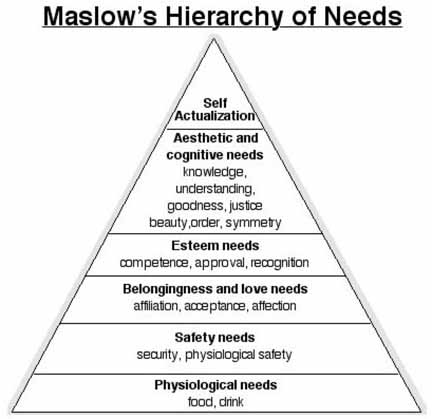| home | faerie vines | rat vines | dragon vines | ehn vines | sanctuary vines | saturn being |
| 1f_1 | 1f_2 | 1f_3 | 1f_4 | 1f_5 | 1f_6 | 1f_7 | 1f_8 | 1f_9 | 1f_10 | 1f_0 |
|---|
PERSONAL FULFILLMENT MODEL: SYSTEMATIC NEEDS ASSESSMENT |
 |
Maslow's Hierarchy of Needs is a theory in psychology that Abraham Maslow proposed in his 1943 paper A Theory of Human Motivation, which he subsequently extended to include his observations of man's innate curiosity. His theory contends that as humans meet 'basic needs', they seek to satisfy successively 'higher needs' that occupy a set hierarchy. |
|---|
Innate growth forces constantly create upward movement in the hierarchy unless basic needs remain unmet indefinitely.
Where the model is useful is in identifying individuals who get stuck on the lower levels, and who because of early insecurity or later trauma, cannot afford to be concerned with the higher levels: but this is chiefly relevant to mental health professionals rather than teachers. It also, of course, draws attention to how very basic problems—such as being too hot or too cold—can inhibit motivation to learn at higher levels, but we did not really need Maslow to tell us that.
The major difficulty with Maslow is that although his hierarchy makes sense in general terms — if I am pre-occupied with physical needs, I am not usually going to be interested in self-esteem needs, for example — there are equally many occasions on which it does not hold good. It is excessively individualistic, and does not allow for altruism. And although most of Motivation and Personality is about defining “self-actualisation”, he never really succeeds in doing it. It is one of those models in which there is actually less to it than meets the eye!
================================================================================================================